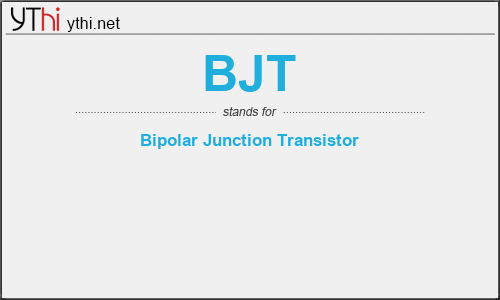What does BJT mean? What is the full form of BJT?
The full form of BJT is Bipolar Junction Transistor.
A bipolar junction transistor (BJT) is a type of transistor that uses both electrons and electron holes as charge carriers. In contrast, a unipolar transistor, such as a field-effect transistor, use only one kind of charge carrier. A bipolar transistor allows a small current injected at one of its terminals to control a much larger current flowing between two other terminals, making the device capable of amplification or switching.
BJTs use two junctions between two semiconductor types, n-type and p-type, which are regions in a single crystal of material. The junctions can be made in several different ways, such as changing the doping of the semiconductor material as it is grown, by depositing metal pellets to form alloy junctions, or by such methods as diffusion of n -type and p-type doping substances into the crystal. The superior predictability and performance of junction transistors soon displaced the original point-contact transistor. Diffused transistors, along with other components, are elements of integrated circuits for analog and digital functions. Hundreds of bipolar junction transistors can be made in one circuit at very low cost.
Bipolar transistor integrated circuits were the main active devices of a generation of mainframe and mini computers, but most computer systems now use integrated circuits relying on field effect transistors. Bipolar transistors are still used for amplification of signals, switching, and in digital circuits. Specialized types are used for high voltage switches, for radio-frequency amplifiers, or for switching heavy currents.
BJT
means
Bipolar Junction Transistor![]()
Translate Bipolar Junction Transistor to other language.


Leave a Reply
You must be logged in to post a comment.